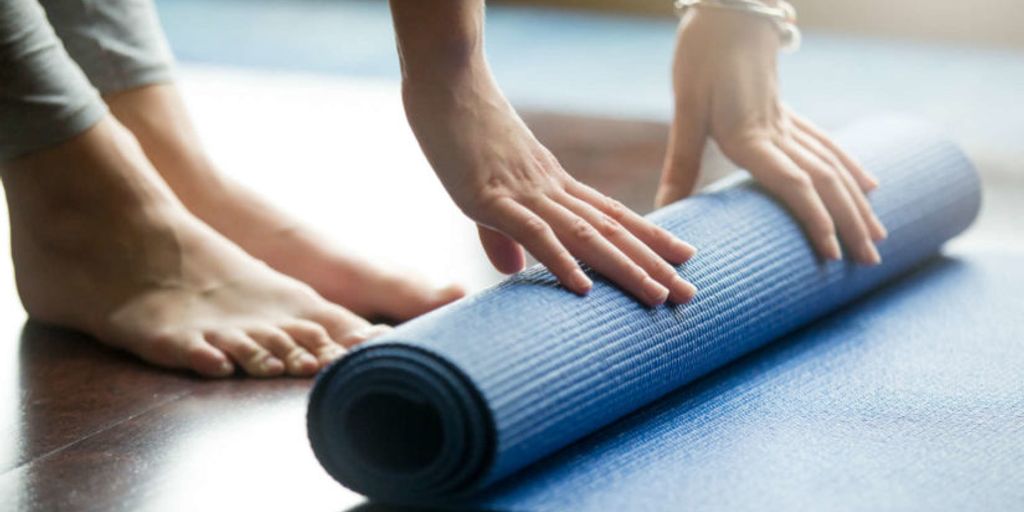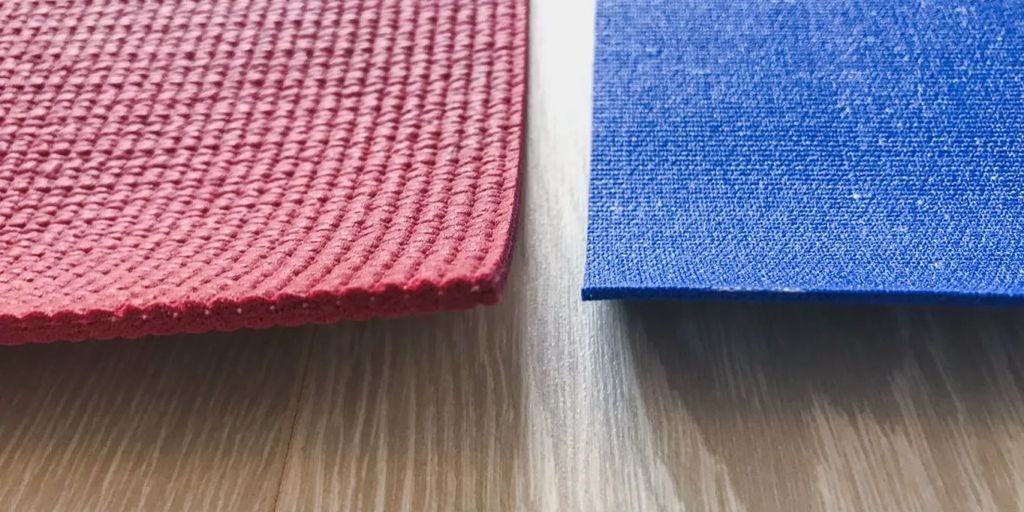
Finding the Perfect Yoga Mat Near Me: A Comprehensive Guide
Finding the perfect yoga mat can significantly enhance your practice, providing the right balance of comfort, support, and durability. Whether you're a seasoned yogi or just starting out, understanding the various factors that contribute to a great yoga mat is essential. This comprehensive guide will walk you through everything you need to know about selecting the ideal yoga mat near you, from assessing your needs to comparing prices and quality.
Key Takeaways
- Understanding your yoga style is crucial in selecting the right mat.
- Material preferences can affect both comfort and sustainability.
- Thickness and texture are key factors in mat performance.
- Local shops and studios can offer personalized recommendations.
- Proper care extends the life of your yoga mat.
Understanding Your Yoga Mat Needs
To conveniently locate the perfect yoga mat near you, it's essential to understand your specific needs and preferences. This involves evaluating your yoga style, material preferences, and the desired thickness and texture of the mat.
Assessing Your Yoga Style
Different yoga styles require different types of mats. For instance, if you practice hot yoga, you'll need a mat with excellent grip and moisture absorption. On the other hand, for restorative yoga, a thicker, more cushioned mat might be ideal.
Considering Material Preferences
Yoga mats come in various materials, each with its own benefits. Common materials include PVC, rubber, and TPE. PVC mats are durable and provide good grip, while rubber mats are eco-friendly and offer excellent traction. TPE mats are lightweight and easy to clean.
Evaluating Thickness and Texture
The thickness and texture of a yoga mat can significantly impact your practice. Thicker mats provide more cushioning, which is beneficial for poses that put pressure on your joints. However, they can be less stable for balance poses. Textured mats offer better grip, which is crucial for maintaining poses without slipping.
Understanding these factors will help you make an informed decision and find a mat that enhances your yoga practice.
Top Places to Buy a Yoga Mat Near Me
Finding the perfect yoga mat can be a journey, but knowing where to look can make it easier. Here are some top places to consider when searching for a yoga mat near you.
Local Yoga Studios
Local yoga studios often carry a selection of mats tailored to their clientele. These studios may offer mats that are specifically designed for the type of yoga they teach, ensuring you get a mat that meets your needs. Additionally, purchasing from a studio can sometimes come with the added benefit of a discount for members.
Sporting Goods Stores
Sporting goods stores are a great place to find a variety of yoga mats. They typically stock a range of options from budget-friendly to high-end mats. Stores like these often have knowledgeable staff who can help you choose the right mat based on your preferences and yoga style.
Specialty Fitness Shops
Specialty fitness shops focus on high-quality fitness gear, including yoga mats. These shops often carry top brands and the latest models, ensuring you have access to the best mats available. If you're looking for something specific, such as eco-friendly options or mats with unique features, these shops are worth checking out.
When searching for the perfect yoga mat, consider visiting multiple locations to compare options and find the best fit for your practice. We found the best yoga mats of 2024 after testing 26 options in the Verywell testing lab, and recommend top choices from Lululemon, Gaiam, Manduka, and more.
Features to Look for in a Yoga Mat
Durability and Longevity
When selecting a yoga mat, durability and longevity are crucial factors. A high-quality mat should withstand regular use without showing significant wear and tear. Look for mats made from materials like natural rubber or high-density PVC, which are known for their resilience.
Eco-Friendly Options
For environmentally conscious yogis, choosing an eco-friendly yoga mat is essential. Mats made from sustainable materials such as natural rubber, jute, or organic cotton are excellent choices. These materials are biodegradable and have a lower environmental impact compared to traditional PVC mats.
Portability and Storage
If you travel frequently or attend classes outside your home, a lightweight and portable yoga mat is a must. Consider mats that are easy to roll up and come with carrying straps or bags for convenient transport. Additionally, ensure the mat can be stored compactly without losing its shape or integrity.
Investing in a yoga mat that meets your specific needs can significantly enhance your practice and overall experience.
Comparing Prices and Quality
When it comes to choosing a yoga mat, understanding the balance between price and quality is crucial. A high-value yoga mat is one that offers excellent performance without breaking the bank. Here, we break down the options into three categories: budget-friendly, mid-range, and high-end mats.
Budget-Friendly Options
For those new to yoga or looking for an affordable option, budget-friendly mats are a great choice. These mats typically range from $10 to $30 and offer basic features suitable for beginners. While they may not have the longevity of pricier options, they provide a good starting point.
Mid-Range Choices
Mid-range yoga mats, priced between $30 and $80, offer a balance of quality and affordability. These mats often feature better materials and enhanced durability, making them suitable for regular practitioners. They strike a good balance between cost and performance, providing value for money.
High-End Mats
High-end yoga mats are designed for serious practitioners who prioritize quality and performance. These mats can cost upwards of $80 and are made from premium materials that offer superior grip, cushioning, and longevity. Investing in a high-end mat ensures you get the best experience, but it's essential to consider if the additional features justify the price.
When comparing prices and quality, always consider your specific needs and how often you'll use the mat. A high-value yoga mat is high quality, so we look for products that balance cost and performance effectively.
Customer Reviews and Recommendations
Online Reviews
When it comes to choosing the best yoga mat for beginners, online reviews can be incredibly insightful. Websites like Amazon, YogaOutlet, and REI feature a variety of yoga mats, towels, and straps, along with user ratings and detailed feedback. This can help you gauge the quality and performance of different mats before making a purchase.
Word of Mouth
Sometimes, the best recommendations come from friends and fellow yogis. Ask around in your local yoga community or at your yoga studio to get personal insights. These firsthand experiences can be invaluable in finding a mat that suits your needs.
Expert Opinions
For a more in-depth analysis, consider looking at expert reviews and featured collections. Many fitness and yoga blogs offer comprehensive guides and reviews available from seasoned practitioners and instructors. These experts often test a range of products and provide detailed evaluations, helping you make an informed decision.
Caring for Your Yoga Mat
Cleaning Tips
Regular cleaning is essential to maintain the hygiene and longevity of your yoga mat. Use a mild detergent mixed with water to wipe down your mat after each session. Avoid using harsh chemicals as they can damage the material. For a deeper clean, you can occasionally soak your mat in a bathtub filled with warm water and a bit of mild soap. Always ensure your mat is completely dry before rolling it up to prevent mold and mildew.
Storage Solutions
Proper storage of your yoga mat can significantly extend its lifespan. Store your mat in a cool, dry place away from direct sunlight, as UV rays can degrade the material over time. Consider using a yoga mat bag or strap to keep it rolled up neatly and to protect it from dust and dirt. If you practice at a studio, check if they offer storage options for your mat.
Maintenance Practices
Regular maintenance can help keep your yoga mat in top condition. Inspect your mat periodically for signs of wear and tear, such as thinning or fraying edges. Rotate your mat occasionally to ensure even wear. If your mat starts to lose its grip, it might be time to replace it. Additionally, following the manufacturer's care instructions can help you avoid common issues and prolong the life of your mat.
Taking good care of your yoga mat not only enhances your practice but also ensures that your investment lasts longer. For more tips and guides on yoga mats, visit our yoga blog: explore yoga topics, guides on yoga mats, straps, and accessories. find the best yoga mat for your practice and tips for home workouts.
Taking care of your yoga mat is essential for maintaining its longevity and ensuring a hygienic practice. Regular cleaning and proper storage can make a significant difference. For more tips and to explore our range of high-quality yoga mats, visit our website today!
Conclusion
Finding the perfect yoga mat near you involves considering various factors such as material, thickness, texture, and price. By understanding your personal needs and preferences, you can make an informed decision that enhances your yoga practice. Whether you choose to shop online or visit local stores, taking the time to research and test different options will ensure you find a mat that offers the right balance of comfort, support, and durability. Happy yoga mat hunting!
Frequently Asked Questions
How do I choose the right thickness for my yoga mat?
The right thickness for a yoga mat depends on your practice style and comfort preferences. Thicker mats (around 6mm) provide more cushioning, ideal for therapeutic practices, while thinner mats (around 3mm) offer better stability for balance poses.
Are eco-friendly yoga mats worth the investment?
Eco-friendly yoga mats are made from sustainable materials and are often free from harmful chemicals. They can be a bit pricier but are worth the investment for those looking to reduce their environmental impact and practice on a non-toxic surface.
Can I use a regular exercise mat for yoga?
While you can use a regular exercise mat for yoga, it's not recommended. Yoga mats are designed to provide the right amount of grip and cushioning specifically for yoga practice, which regular exercise mats may lack.
How often should I clean my yoga mat?
It's advisable to clean your yoga mat after every few uses to maintain hygiene. For a deeper clean, you can wash it thoroughly once a month, depending on your frequency of practice and how much you sweat.
What are the best materials for a durable yoga mat?
Durable yoga mats are often made from materials like natural rubber, PVC, and TPE. Natural rubber is eco-friendly and offers excellent grip, PVC is highly durable, and TPE is lightweight and recyclable.
How can I improve the grip of my yoga mat?
To improve the grip of your yoga mat, ensure it's clean and dry before use. You can also sprinkle a bit of water or use a yoga towel to enhance traction, especially if you have a tendency to sweat during practice.


